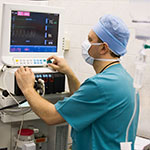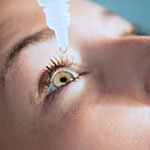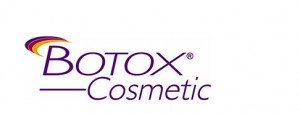Oculoplastic Surgery
Blepharoplasty
 Blepharoplasty is surgery to remove excess upper and lower eyelid skin which results from injury, aging, or disease. It may be covered by insurance if eye health or vision is affected.
Blepharoplasty is surgery to remove excess upper and lower eyelid skin which results from injury, aging, or disease. It may be covered by insurance if eye health or vision is affected.
Ptosis Repair
Ptosis (upper eyelid drooping) may be congenital or from injury or aging, causing decreased vision and eye fatigue. Surgical repair strengthens the eyelid muscle and removes excess skin. Insurance benefits are usually available when ptosis blocks vision.
Ectropion (Sagging or turning out of the lower eyelid)
Ectropion can cause eye burning, watering, redness and blurred vision. It is caused by looseness of the lower eyelid. Surgical correction tightens the eyelid.
Entropion (Turning in of the lower eyelid)
Entropion results from looseness of the lower eyelid that occurs with aging or scarring. Eyelashes then rub the eye, causing redness, irritation or ulcers. Surgical correction can repair this.
Diabetic Eye Disease
 An eye examination is the only way to find changes inside your eye caused by diabetes. Our doctors often diagnose and treat serious retinopathy before patients are aware of vision problems.
An eye examination is the only way to find changes inside your eye caused by diabetes. Our doctors often diagnose and treat serious retinopathy before patients are aware of vision problems.
The best treatment is prevention of retinopathy. Good blood sugar control reduces the long-term risk of vision loss from diabetes. Smoking will worsen diabetic retinopathy.
Diabetic retinopathy is treated with laser surgery, VEG-F intraocular injections (See "WET AMD"), and vitrectomy:
Laser surgery/Intraocular Injections
Laser surgery and Intraocular injections are helpful in treating diabetic macular edema and proliferative diabetic retinopathy (PDR).
For macular edema, both laser and injections decrease fluid leakage. The main goal is to prevent further loss of vision. Blurred vision from macular edema seldom returns to normal, although some experience partial improvement. For PDR, pan-retinal photocoagulation (PRP) shrinks abnormal new vessels and often prevents future growth. It also decreases the risk of vitreous bleeding.
Multiple laser treatments and or injections are sometimes necessary. Laser or injections does not cure diabetic retinopathy and do not always prevent further loss of vision.
Vitrectomy
During this procedure, performed in the operating room, the blood-filled vitreous is removed.
Dry Eye Treatment
 Tears are produced constantly to lubricate the eye. With insufficient moisture, you may experience stinging, burning, or itchiness. This condition is known as Dry Eye or Keratoconjunctivitis Sicca (KCS). Some medications that aggravate symptoms are:
Tears are produced constantly to lubricate the eye. With insufficient moisture, you may experience stinging, burning, or itchiness. This condition is known as Dry Eye or Keratoconjunctivitis Sicca (KCS). Some medications that aggravate symptoms are:
- Antihistamines
- Antidepressants
- Beta-blockers
- Birth-control pills
- Diuretics
- Medications for "nerves"
- Pain relievers
- Sleeping pills
In women, hormonal changes can decrease tear production The most frequent treatments include artificial tears, omega fatty acid supplements and lid hygiene. For more severe symptoms, ointment or a gel can be used. A new medication, Restasis, is helpful for many patients. Small plugs may be inserted in the corner of the eyelids to slow tear drainage. Dry eye cannot be cured, but treatment can make your eyes more comfortable.
BOTOX
 BOTOX® injections can be used to treat medical conditions such as eyelid and facial muscle spasms. Treatments are done in the office, and typically last 3-4 months.
BOTOX® injections can be used to treat medical conditions such as eyelid and facial muscle spasms. Treatments are done in the office, and typically last 3-4 months.
BOTOX® Cosmetic injections are ideal procedures that produce a dramatic decrease of upper facial/forehead lines caused by frowning or squinting. An injection of BOTOX® into the muscles of facial expression weakens the muscles and prevents frowning.
For more information about BOTOX® Cosmetic, click here.
Eye Exams
Routine eye exams are very important to monitor the health of your eye and to determine your need for glasses. Some eye diseases such as glaucoma, can only be detected with a thorough exam, so it is important to have your eyes examined every 1 to 2 years.
Your eye exam will take approximately 1/2 to 1 1/2 hours. Your eyes will be dilated, so your near vision may be fuzzy for about 3-4 hours. You will also be sensitive to light, so bring sunglasses with you or we can provide you with some disposable ones. Please bring any prescription glasses with you to your exam.
Your eye exam will include:
- Complete medical/ocular history
- Visual acuity at both distance and near
- Pupil and pressure check
- Confrontation visual fields
- Extra-ocular muscle evaluation
- Refraction
- Dilation
- Examination of the front and back parts of your eye
Other tests may be done if deemed necessary.
Afterwards, your doctor will explain the findings and make recommendations to help maintain the health of your eyes. We will address any concerns and take time to answer questions. At Jensen Eye Associates, we believe outstanding customer service and personalized care are an essential part of any eye exam.
Near Vision CK
Dr. Johanna Jensen now offers Near Vision CK
CK (Conductive Keratoplasty) is intended for people over 40 who want to improve their near vision and reduce their dependence on reading glasses. CK is not intended for people with myopia (nearsightedness).
You're likely a good candidate for NearVision CK if you:
- Are over age 40
- Had great vision your whole life
- Now require reading glasses for near tasks such as reading, hobbies, or computer work.
- Have had LASIK or PRK surgery and have trouble reading
The Procedure
Using radio frequency (RF) energy, NearVision CK changes how the eye focuses light by reshaping the cornea (front surface of the eye).
After Dr. Jensen applies numbing drops, controlled RF energy is
applied in a circular pattern in the periphery of your cornea and
therefore minimizes interference with your line of sight (i.e.,
pupil).
After the procedure, which takes less than three minutes, you don't
have to wear a patch and can usually return to work or normal
activities the next day. Your eye may feel scratchy during the first
few days, but you are given eye drops to help with comfort and healing.
NearVision CK can also help patients with farsightedness, or
hyperopia, a condition in which the eye is too flat. CK makes the
cornea steeper and therefore improves vision.
Risks and Complications
NearVision CK is a very safe procedure because there is no cutting or
removal of tissue. Although the following risks are relatively rare,
they should be taken into consideration by anyone considering the
NearVision CK procedure:
- Discomfort and/or foreign body sensation
- Glare
- Halos at night
- Overcorrection/astigmatism
- Tearing

